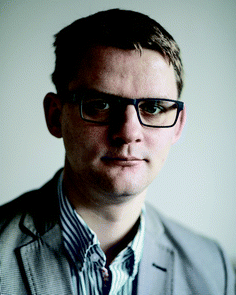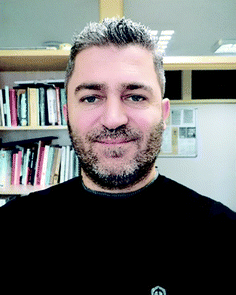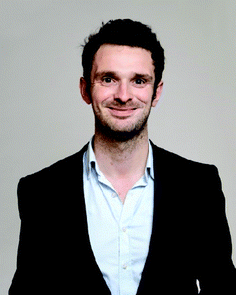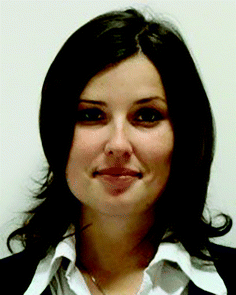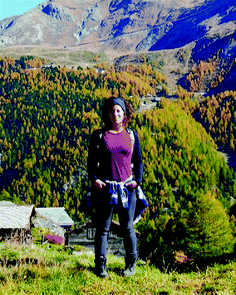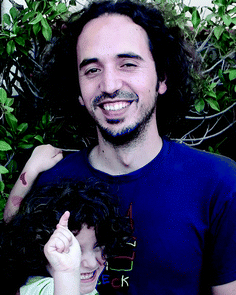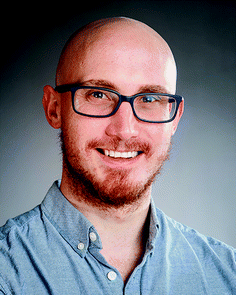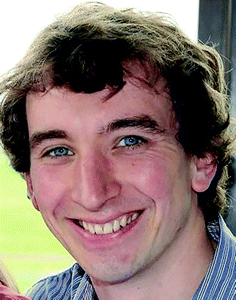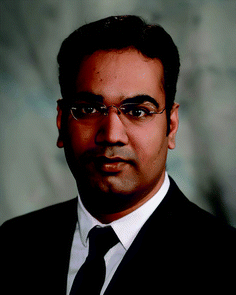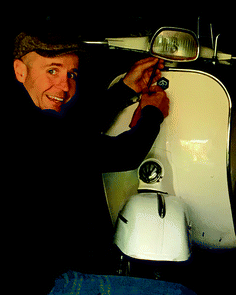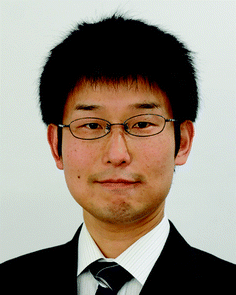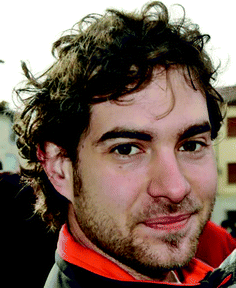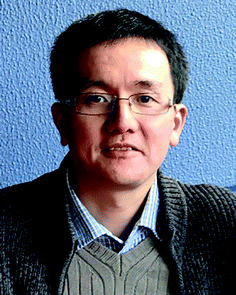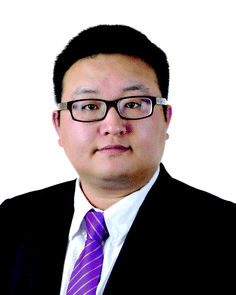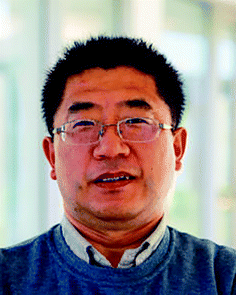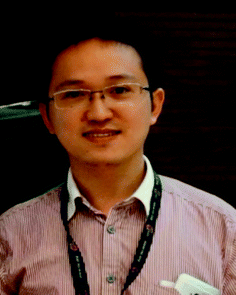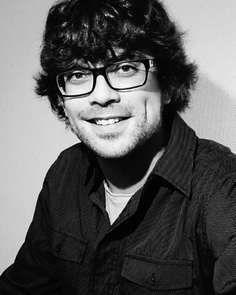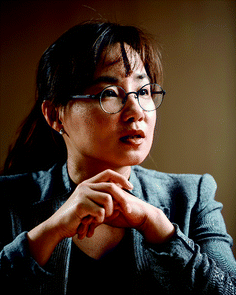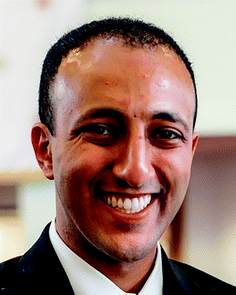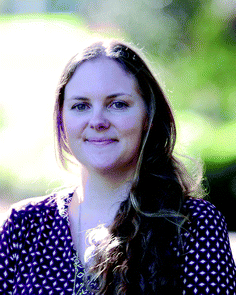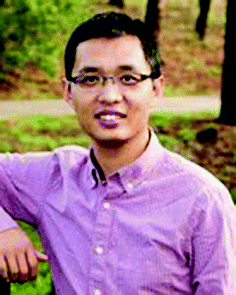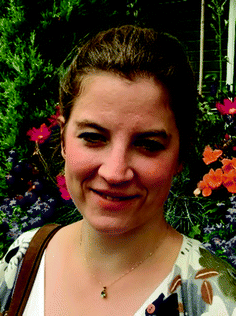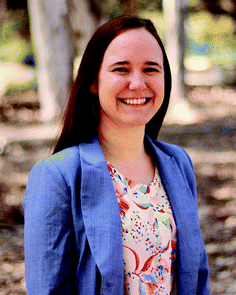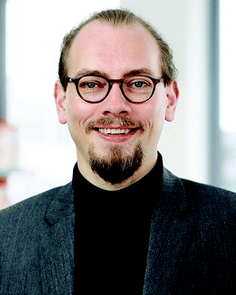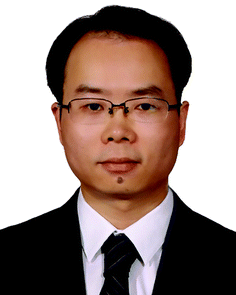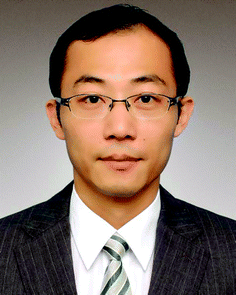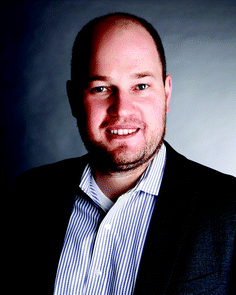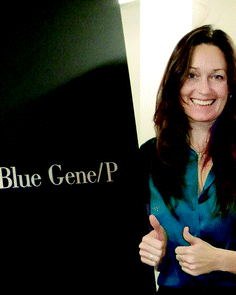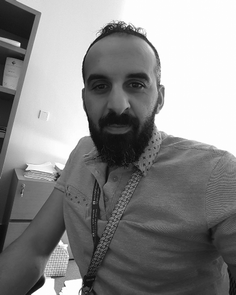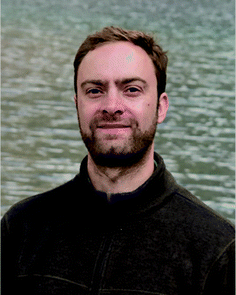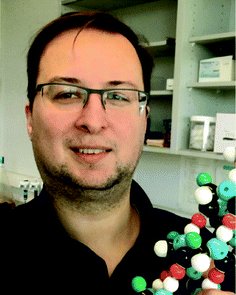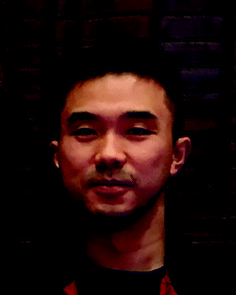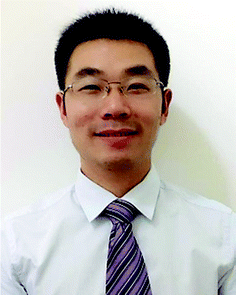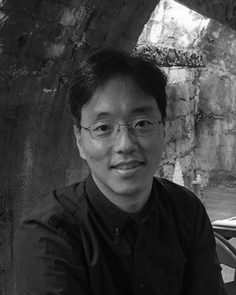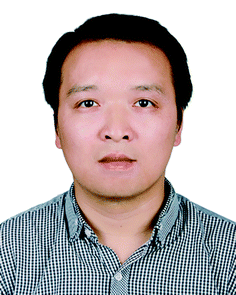Contributors to the Emerging Investigators Issue 2019
Ulf-Peter Apfel received his PhD from the University of Jena in 2010 in the group of W. Weigand. After a postdoctoral stay with S. J. Lippard at MIT (2011/2012) as a Humboldt fellow, he started his independent career at the Ruhr-University Bochum funded by the “Fonds der Chemischen Industrie” and the German research council as an Emmy Noether group leader. Since 2016 he is also an ATTRACT group leader for electrosynthesis at the Fraunhofer Institute UMSICHT. His groups are interested in combining basic science and application driven research for the electrochemical reduction of CO2 and protons which includes the design of novel electrolyzers and electrodes.
Abdullah Aydogan obtained his PhD in 2010 from Istanbul Technical University, Turkey with Prof. Ahmet Akar on functionalized calix[4]pyrroles and their applications in anion recognition and selective extraction of anions. During post-doctoral research with Prof. Jonathan L. Sessler at the University of Texas at Austin, USA, he worked in the area of calix[4]pyrrole based supramolecular polymers, anion recognition triggered assembly and disassembly of gold nanoparticles and electrochemical anion sensors. Currently, he is an associate professor at Istanbul Technical University, Turkey. His research focuses on the development of supramolecular polymers based on anion recognition, supramolecular systems and their applications in recognition and sensing.
Thomas Bennett obtained his PhD in Materials Science at the University of Cambridge in 2012, before continuing to an independent Research Fellowship (2013–2016). Since 2016 he has been a Royal Society University Research Fellow at the Department of Materials Science and Metallurgy, University of Cambridge. He has previously been a JSPS Visiting Scientist at Kyoto University, Japan, and a Visiting Cambridge Fellow at the University of Canterbury, Christchurch, New Zealand. He has published over 70 peer-reviewed papers and is widely known for his work on non-crystalline hybrid materials such as metal–organic framework glasses and liquids.
Tatiana Besset obtained her PhD in Chemistry (2009) at Grenoble University with Dr Greene. Then, she was a postdoctoral fellow in the group of Prof. Glorius and pursued research in 2011 in the Reek group. Since 2012, she has been a CNRS Associate Researcher in the “Fluorinated Biomolecules Synthesis” group in Rouen. In 2017, she was awarded an ERC Starting Grant. In 2018, she defended her habilitation and received the CNRS Bronze medal and the “J.-P. Sauvage” prize (SCF). Her research involves the design of new transformations involving transition-metal catalysis (C–H bond activation) and the development of new strategies in organofluorine chemistry.
Raffaella Buonsanti obtained her PhD in Nanochemistry in 2010 at the National Nanotechnology Laboratory, University of Salento. Then, she moved to the US where she spent over five years at the Lawrence Berkeley National Laboratory, first as a postdoc and project scientist at the Molecular Foundry and after as a tenure-track staff scientist in the Joint Center for Artificial Photosynthesis. In October 2015 she started as a tenure-track assistant professor in the Institute of Chemical Sciences and Engineering at EPFL. She is passionate about materials chemistry, nanocrystals, understanding nucleation and growth mechanisms, energy and chemical transformations. She also loves nature and animals.
Jesús Campos obtained his MPhil at the University of Manchester working with Prof. Sutherland, and his PhD at University of Sevilla (2012) under the guidance of Prof. Carmona, including a visiting stay with Prof. Brookhart (UNC). As a postdoc he developed his research at Yale and Oxford Universities within the groups of Profs. Crabtree and Aldridge, respectively. In 2016 he moved back to Sevilla as a Marie Curie fellow and one year later he was appointed Tenured Scientist of the Spanish National Research Council (CSIC), where he enjoys the beauties of organometallics with a team of highly enthusiastic students.
Nathaniel Davis received his Bachelor of Advanced Science (First Class Honours and the University Medal) from the University of Sydney (2009–2013). He received the Cambridge Australia Bragg Scholarship to carry out his PhD in Optoelectronics at the Cavendish Laboratory, University of Cambridge (2013–2016). He was then awarded the Cambridge Oppenheimer Early Career Research Fellowship in (2017–2018). He is currently a lecturer in Physical Chemistry at Victoria University of Wellington and an associate investigator for both the Dodd Walls Centre for Photonics and Quantum Technology and the MacDiarmid Institute for Advanced Materials and Nanotechnology. His research looks at the creation of new materials allowing light and electronic energy to be interchanged: synthesising different nanomaterials (organic/inorganic) for optoelectronic applications such as photovoltaics, light emitting diodes and luminescent solar concentrators.
Jonathan Foster is a Vice Chancellors Fellow in the Department of Chemistry at the University of Sheffield. He undertook his PhD at the University of Durham with Professors Jon Steed and Judith Howard CBE FRS and post-doctoral positions at the University of Cambridge in the groups of Prof. Jonathan Nitschke and Prof. Anthony Cheetham FRS. Jona moved to Sheffield following the award of a Ramsay Memorial Fellowship. His group are focussed on the design, synthesis and characterisation of metal–organic nanosheets (MONs) and work with academic and industrial partners to investigate their use in catalysis, sensing, separation and electronics applications.
Akhilesh K. Gaharwar is an assistant professor in the Department of Biomedical Engineering at Texas A&M University. He received his PhD from Purdue University and completed his postdoctoral training at MIT and Harvard University. The goal of his lab is to design nanoengineered biomaterials with wide-ranging applications in the field of regenerative medicine, by combining principles from materials science, stem cell biology, additive biomanufacturing and high throughput genomics. He has published more than 100 peer-reviewed articles in high-impact journals. Dr Gaharwar's interdisciplinary research has also been recognized with over 20 major international awards including the prestigious – the NIH Director's New Innovator Award (DP2).
Lars Heinke studied physics in Leipzig, Germany. After obtaining his PhD, his scientific journey brought him to Berlin, overseas to Berkeley, California and to Karlsruhe. At the KIT, he is the head of the “Dynamic Processes in Porous Films” group, exploring metal–organic framework coatings and their physical properties, especially conduction, diffusion and responsive phenomena. In his spare time you can find Lars working on his vintage Vespa and Lambretta scooters or avidly collecting original old reggae records on 45 rpm-vinyl. However, after a long day of science, his favourite thing to do is spending time with his baby daughter and wife.
Takashi Hirose is an associate professor in the Institute for Chemical Research at Kyoto University. He received his PhD from Kushu University in 2010 under the supervision of Professors Masahiro Irie and Kenji Matsuda. Thereafter, he joined Professor Makoto Fujita's group at The University of Tokyo as a JSPS postdoctoral fellow (PD). During this term, he joined Professor E. W. (Bert) Meijer's group at the Eindhoven University of Technology as a visiting researcher. In 2011 he was appointed as an assistant professor at Kyoto University. His research interests include the development of helically twisted π-extended molecules and their supramolecular systems.
Miguel García Iglesias received his PhD at Autónoma University of Madrid (UAM) in the field of phthalocyanine-based molecular materials (2011). Upon completion of his PhD, he joined the group of Prof. E. W. Meijer at the Technological University of Eindhoven as a postdoctoral researcher. In 2015 he returned to UAM and IMDEA-Nanoscience, firstly as teaching assistant and currently he holds the prestigious position “Juan de la Cierva-Incorporacion” where he is developing his own research lines. His current research interests include the use of non-covalent synthesis for accessing multivalent scaffolds for drug-delivery and ferroelectric supramolecular materials with improved optoelectronic properties.
Chong-Yong Lee received his PhD in Electrochemistry from Monash University. Following postdoc studies at the University of Erlangen-Nuremberg and University of Cambridge, he took up a University of Wollongong Vice Chancellor's Research Fellowship position in 2015. His research interests are electrochemistry, nanomaterials, metalloenzymes, catalysis, solar fuels and 3D printing. He employs electrochemical, photocatalytic and photoelectrochemical approaches for activation of small molecules such as H2O, O2 and CO2 to valuable fuels.
Jian-Feng Li has been a full professor of Chemistry at Xiamen University since 2014. He received his BSc degree in Chemistry from Zhejiang University in 2003 and his PhD degree in Chemistry from Xiamen University in 2010. During 2010–2013, he went to the University of Bern and ETH Zürich in Switzerland for postdoctoral research. He has published more than 100 peer-reviewed papers in high-impact journals with total citations over 6000 and an H-index of 38. His research interests include surface-enhanced Raman spectroscopy, core–shell plasmonic nanostructures, (single-crystal) electrochemistry and surface catalysis.
Lifeng Liu received his BS degree in Applied Physics from Beijing Jiaotong University (2001), and both his MS (2004) and PhD (2007) degrees in Condensed Matter Physics from the Institute of Physics, Chinese Academy of Sciences. He joined the Max Planck Institute of Microstructure Physics in 2007, first working as a postdoctoral researcher and then as a staff scientist. He started his independent research career in 2008 and became a group head in 2009. In 2011, he moved to the International Iberian Nanotechnology Laboratory (INL) and set up a research group there, where his research interest focuses on electrochemical energy conversion and storage materials.
Liang-Qiu Lu received his PhD degree in 2011 from Central China Normal University (CCNU), under the guidance of Prof. Wen-Jing Xiao. Then he performed his postdoctoral research under the support of Humboldt scholarship with Professor Matthias Beller at the Leibniz Institute for Catalysis (Germany). In June of 2013, he came back to CCNU to start his independent career as an assistant professor. Two years later, Liang-Qiu was promoted to full professor. His research interests focus on the development of new reaction methodologies towards significant heterocycles, particularly on transition-metal-catalyzed dipolar cyclizations and visible-light-driven organic photochemical reactions.
Abraham Mendoza was born and raised in Gijón, a city in the beautiful coast of Asturias (Spain). He obtained his BSc and PhD degrees in Chemistry (2009) at the University of Oviedo with Profs. J. Barluenga, F. J. Fañanás, and F. Rodríguez. He was awarded a Fulbright Fellowship (2010–2012) to join Prof. P. S. Baran at The Scripps Research Institute and then returned to Europe as a Marie Curie Fellow (2012–2013) at the University of Cambridge with Prof. M. J. Gaunt. In late 2013, he started his independent career at Stockholm University and became a fellow of the European Research Council and the Wallenberg Foundation in 2017. His group is currently pursuing synthetic methods towards polar molecules, materials and pharmaceuticals using chiral carbon-atom reagents and electron transfer reactions.
Hoi Ri Moon received her BS in 2001 from Ewha Womans University and PhD in 2007 from Seoul National University. After working as a postdoctoral fellow at Molecular Foundry, Lawrence Berkeley National Laboratory, she joined Ulsan National Institute of Science and Technology (UNIST) in 2010 as an assistant professor and was promoted to an associate professor in 2014. Her group aims to understand the flexible behaviors of metal–organic frameworks (MOFs) and create unique MOFs for gas separation (especially hydrogen isotope separation), gas storage, molecular sensing and heterogeneous catalysis.
David Nagib grew up near Philadelphia as the eldest of four siblings in an Egyptian family with a strong love for education. He earned his BSc with honors at Boston College in 2006, studying peptide-catalyzed desymmetrization with Prof. Scott Miller and his PhD at Princeton University in 2011, developing medicinally relevant trifluoromethylations via photoredox catalysis with Prof. David MacMillan. As an NIH Postdoctoral Fellow at the University of California, Berkeley, he studied oxidative gold mechanisms for C–H activation with Prof. Dean Toste. Since 2014, David and his team at The Ohio State University have forged new radical routes for synthesizing interesting molecules. Outside the lab, David enjoys running along the Scioto River, checking out Columbus’ vibrant foodie scene and planning future world travels with his family.
Lisa I. Pilkington was born in Auckland, New Zealand in 1988. Lisa graduated with her PhD in 2015 from the University of Auckland (NZ) in the total synthesis of bioactive natural products, under the supervision of A/Prof. David Barker. Following this, she completed an MSc in Applied Statistics at the University of Oxford (UK). Lisa returned to the University of Auckland in 2016, where she is currently undertaking post-doctoral research, combining her passions for organic and medicinal chemistry and data science.
Zewei Quan is currently a professor in the Department of Chemistry at Southern University of Science and Technology in Shenzhen, China. He obtained his PhD in inorganic chemistry from Changchun Institute of Applied Chemistry, Chinese Academy of Sciences (with Prof. Jun Lin) in 2009. After that, he worked as a postdoctoral fellow and later a research scientist at the State University of New York at Binghamton with Prof. Jiye Fang (2009–2012). He then joined Los Alamos National Laboratory as Oppenheimer Fellow (2012–2015). His current research interests include solution-phase synthesis, self-assembly and high-pressure behaviour of nanoparticles and their emerging applications.
Emily Que is a professor at UT Austin. She received her PhD in the lab of Chris Chang (UC Berkeley) and was a post-doc under Thomas O’Halloran and Teresa Woodruff (Northwestern). The Que lab pursues bioinorganic chemistry projects including development of in vivo diagnostic imaging agents and molecular tools for probing the cellular metallome. Outside of the lab, Emily loves eating at trendy food trucks, making a fool of herself at karaoke and wrangling her toddler Eli who is not yet cognizant of the meaning of danger.
Maxie Roessler completed her DPhil at the University of Oxford in 2012 under the supervision of Prof. Fraser Armstrong FRS. After a one-year PostDoc in the same group she started her independent career at Queen Mary University of London in 2013 and moved to Imperial College London in April 2019. Maxie's research interests are in redox processes, especially those that underpin respiration and photosynthesis. She has a keen interest in EPR spectroscopy, in particular its application to understanding the mechanism of complex metalloenzymes. When not at work, Maxie's 6- and 1-year old are keeping her busy!
Alina M. Schimpf received her PhD from the University of Washington under Prof. Daniel R. Gamelin and conducted her postdoctoral research at Massachusetts Institute of Technology with Mircea Dincă. In 2016 she started her independent career at University of California, San Diego, where her group focuses on solution-phase synthesis of tunable, solid-state materials. Alina's research has been recognized by the American Chemical Society (Division of Inorganic Chemistry Young Investigator Award in 2015 and Petroleum Research Fund Doctoral New Investigator Award in 2018) and by the University of California Hellman Fellows Fund (2019).
Bernd M. Schmidt researches responsive supramolecular systems. Born and raised in Berlin, Germany, he did his PhD with Dieter Lentz at the FU Berlin and with Hidehiro Sakurai at the IMS in Okazaki, Japan, working on bowl-shaped aromatic hydrocarbons (corannulene and sumanene). Bernd stayed as a post-doctoral researcher with Makoto Fujita at the University of Tokyo, Japan and with Stefan Hecht at the HU Berlin, Germany, to learn more about supramolecular chemistry, physical-organic chemistry and molecular photoswitches. Since February 2018, he has been an independent research group leader at the HHU Düsseldorf in Germany.
Shiliang Shi received his PhD in Organic Chemistry from the University of Tokyo in 2011 under the supervision of Prof. Masakatsu Shibasaki and Motomu Kanai. After one year of postdoctoral research with Prof. Motomu Kanai as a JSPS fellow, he joined the group of Prof. Stephen Buchwald at MIT as a postdoctoral fellow. In summer 2016, he started his independent research as a professor at Shanghai Institute of Organic Chemistry, CAS. His research interests include (i) the development of efficient organic reactions, with an emphasis on asymmetric syntheses and catalytic reactions based on ligand design; (ii) design and syntheses of new chiral polymers.
Soji Shimizu graduated from Kyoto University in 2002 and obtained his PhD there under the supervision of Professor Atsuhiro Osuka in 2007 for his research on the syntheses and properties of expanded porphyrins. During his PhD studies, he made a short stay in the group of Professor Jonathan L. Sessler, the University of Texas at Austin, in 2005. He was appointed as an assistant professor in 2006 and a lecturer in 2010 at Department of Chemistry, Graduate School of Science, Tohoku University and started his academic career in the group of Professor Nagao Kobayashi in the field of phthalocyanine chemistry. He was then promoted to an associate professor at Department of Chemistry and Biochemistry, Graduate School of Engineering, Kyushu University in 2014. His research interests cover the synthesis of conjugated molecules with novel structures and their optical and electrochemical properties.
Alex Spokoyny is currently an assistant professor in Chemistry and Biochemistry at UCLA and a faculty member of the California NanoSystems Institute (CNSI). Prior to this he received a PhD degree from Northwestern University in Inorganic and Materials Chemistry and conducted a post-doctoral stint at MIT in chemical biology. His group's research encompasses an interdisciplinary approach focusing on pressing problems in chemistry, medicine and materials science with emphasis on developing new molecular cluster chemistry. Alex is a recipient of multiple awards including the recent NSF CAREER Award (2019), Cottrell Scholar Award (2018), Maximizing Investigator's Research Award (MIRA) from the NIH (2017) and Alfred P. Sloan Research Fellowship (2017).
Krista Steenbergen was born in the United States. Following a career spanning several national laboratories, she migrated south to paradise (New Zealand) to complete her first Ironman, and also a PhD at Victoria University of Wellington. Working with supervisor Associate Professor Nicola Gaston, Krista launched her research career in computational materials science. Her research bridges physics and physical chemistry, with a particular focus on using electronic structure methods to investigate the properties of low-dimensional structures. Krista's current fellowship with the MacDiarmid Institute for Advanced Materials and Nanotechnology, one of New Zealand's Centres of Research Excellence, has fostered collaborative research with exceptional experimentalists and theoreticians. This work has further intensified her long-standing interest in materials with application to renewable energy, battery and sensing technologies.
Ali Trabolsi received his BSc degree in chemistry from the Lebanese University in Beirut (Lebanon). In 2002, he moved to Strasbourg (France), where he obtained a MSc degree (2003) in Analytical Chemistry and a PhD degree (2006) in Physical Chemistry. He then joined the group of Sir J. Fraser Stoddart as a postdoctoral scholar at UCLA (USA), where he spent one year before relocating with the group to Northwestern University (USA). From 2009 to 2011, he worked at KAUST (Saudi Arabia) as a research scientist in the advanced membranes and porous materials center. In 2011, Ali joined New York University Abu Dhabi (NYUAD) in the United Arab Emirates as an assistant professor where he then got promoted to tenured associate professor (September 2017). At NYUA, Dr Trabolsi pursues research in the areas of molecular topology, supramolecular chemistry and materials chemistry.
Willem Vanderlinden obtained his PhD under the supervision of Steven De Feyter (Department of Chemistry, KU Leuven, Belgium) using atomic force microscopy to image and quantify interactions of DNA with proteins and small molecules. Afterwards, he moved to Germany as a postdoctoral fellow of the FWO-Flanders to join the lab of Jan Lipfert (Physics Department, LMU Munich) where he developed magnetic tweezer assays to study the dynamics of retroviral integration and DNA supercoiling. Within the same laboratory, he is currently a junior group leader unravelling how nucleic acids are (re-)arranged in the context of multipart nucleoprotein complexes.
Arnout Voet graduated with a PhD from KU Leuven in 2010 having worked in computational drug design. In 2011 he then moved to RIKEN Japan as a postdoctoral researcher to continue his research in computational drug design and as well as computational protein design. During this time, he also learned experimental protein biochemistry and crystallisation. In 2017, funded by an Odysseus Fellowship, Arnout established the Laboratory for Biomolecular Modelling and Design, obtaining a faculty position at KU Leuven department of chemistry. The current research interests of the lab include both computational and experimental protein and drug design.
Hailiang Wang is an assistant professor in the Department of Chemistry at Yale University. He is also a faculty member of the Energy Sciences Institute on Yale West Campus. Prior to joining Yale in 2014, he was a Philomathia Postdoctoral Fellow in the Department of Chemistry at University of California, Berkeley. He received his PhD in Chemistry from Stanford University in 2012 and BS in Chemistry from Peking University in 2007. His research aims to understand the structures and properties of materials at solid/liquid interfaces under electrochemical conditions and to establish design principles for new and improved electrocatalyst and battery materials.
Zhigang Yang obtained his PhD under the supervision of Prof. Xiaojun Peng at Dalian University of Technology in 2011. Afterwards he worked in the laboratory of Prof. Jong Seung Kim at the Korea University as a research professor. In 2015, he formally joined Prof. Junle Qu's research team as a faculty member in Shenzhen University, and presently is an associate professor. His research interests mainly focus on super-resolution imaging microscopy, optical coherence tomography (OCT) and their biological applications.
Hyo Jae Yoon received his undergraduate education from Sogang University in 2005. After earning his PhD at Northwestern University in 2010, he pursued postdoctoral studies at Harvard University until 2014, at which point he joined Korea University to begin his independent career. His research focuses on the synthesis of soft materials and physical-organic studies to understand their functions in electronics, catalysis, energy harvest and conversion and on-surface reactions.
Qianghui Zhou received his BS from Peking University in 2005. He then moved to Shanghai Institute of Organic Chemistry to pursue his PhD degree under the guidance of Prof. Dawei Ma. From 2011 to 2015, he worked as a postdoctoral researcher in the lab of Prof. Phil S. Baran at the Scripps Research Institute. In June 2015, he began his independent career as a professor at Wuhan University. His lab currently focuses on developing novel methodologies for efficient synthesis of biologically important molecules.
| This journal is © The Royal Society of Chemistry 2019 |

